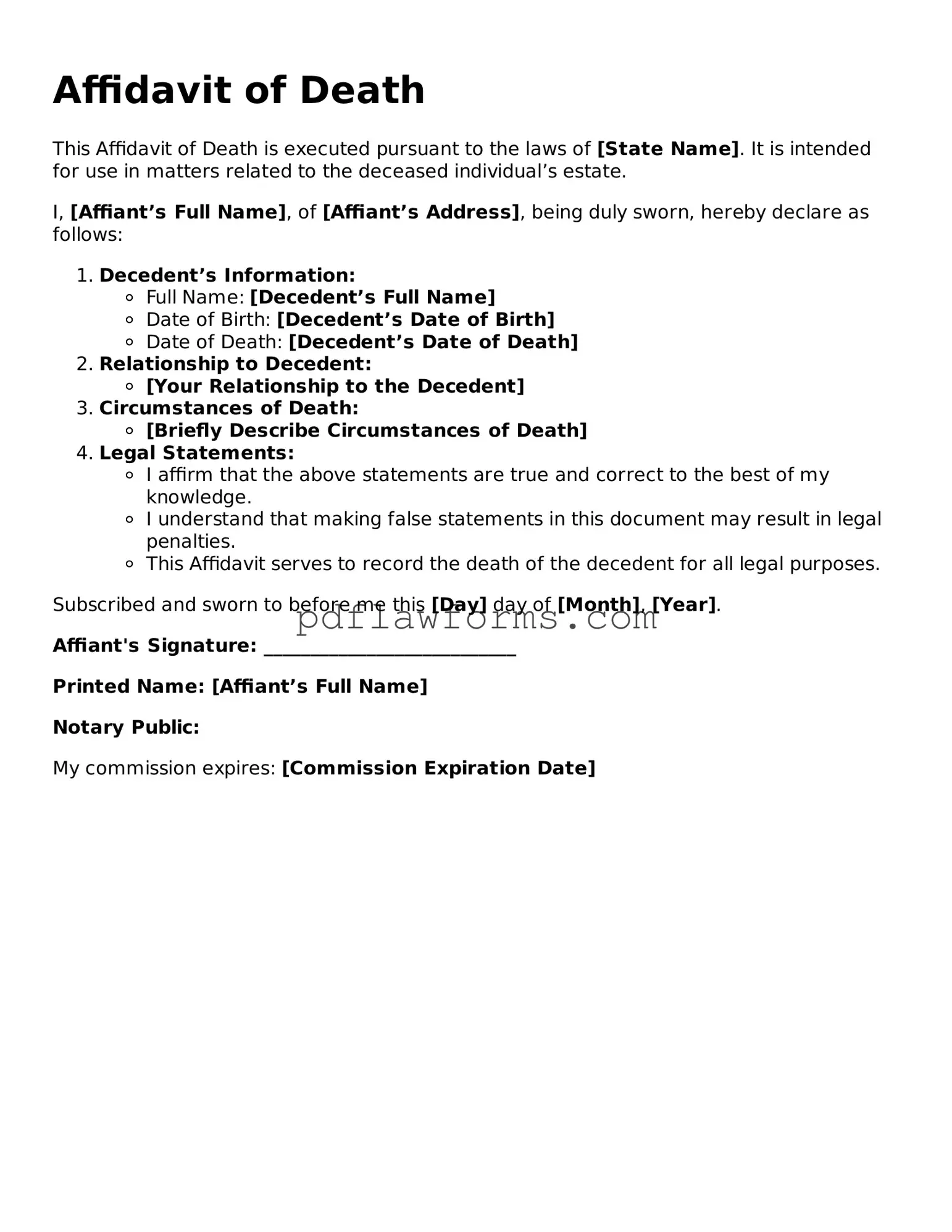Filling out the Affidavit of Death form can be a straightforward process, but many people make common mistakes that can lead to delays or complications. One frequent error is failing to provide accurate personal information. This includes not only the decedent's full name but also details like the date of birth and the date of death. Inaccuracies in this information can create confusion and complicate the legal proceedings that follow.
Another mistake often seen is neglecting to sign the affidavit. It may seem trivial, but without a signature, the document is not valid. Many individuals rush through the process and overlook this crucial step. It is essential to take a moment to review the entire form before submission to ensure that all required signatures are present.
In addition to signing, people sometimes forget to have the affidavit notarized. Notarization is a vital step that adds a layer of authenticity to the document. Without it, the affidavit may not be accepted by the court or other institutions that require proof of death. Always check the requirements for notarization in your state to avoid this pitfall.
Another common oversight is not including supporting documentation. An Affidavit of Death often requires additional paperwork, such as a death certificate. Failing to attach these documents can lead to delays in processing the affidavit. It’s wise to gather all necessary documents before starting to fill out the form.
People may also misinterpret the instructions provided with the affidavit. Each jurisdiction may have slightly different requirements, and misunderstanding these can result in incomplete or incorrect forms. Take the time to read the instructions thoroughly, and don’t hesitate to seek clarification if needed.
Finally, individuals sometimes submit the affidavit without making copies for their records. Keeping a copy of the completed form is important for future reference, especially if questions arise later. This simple step can save time and stress down the line. By being mindful of these common mistakes, individuals can navigate the process more smoothly and ensure that the Affidavit of Death is completed correctly.
